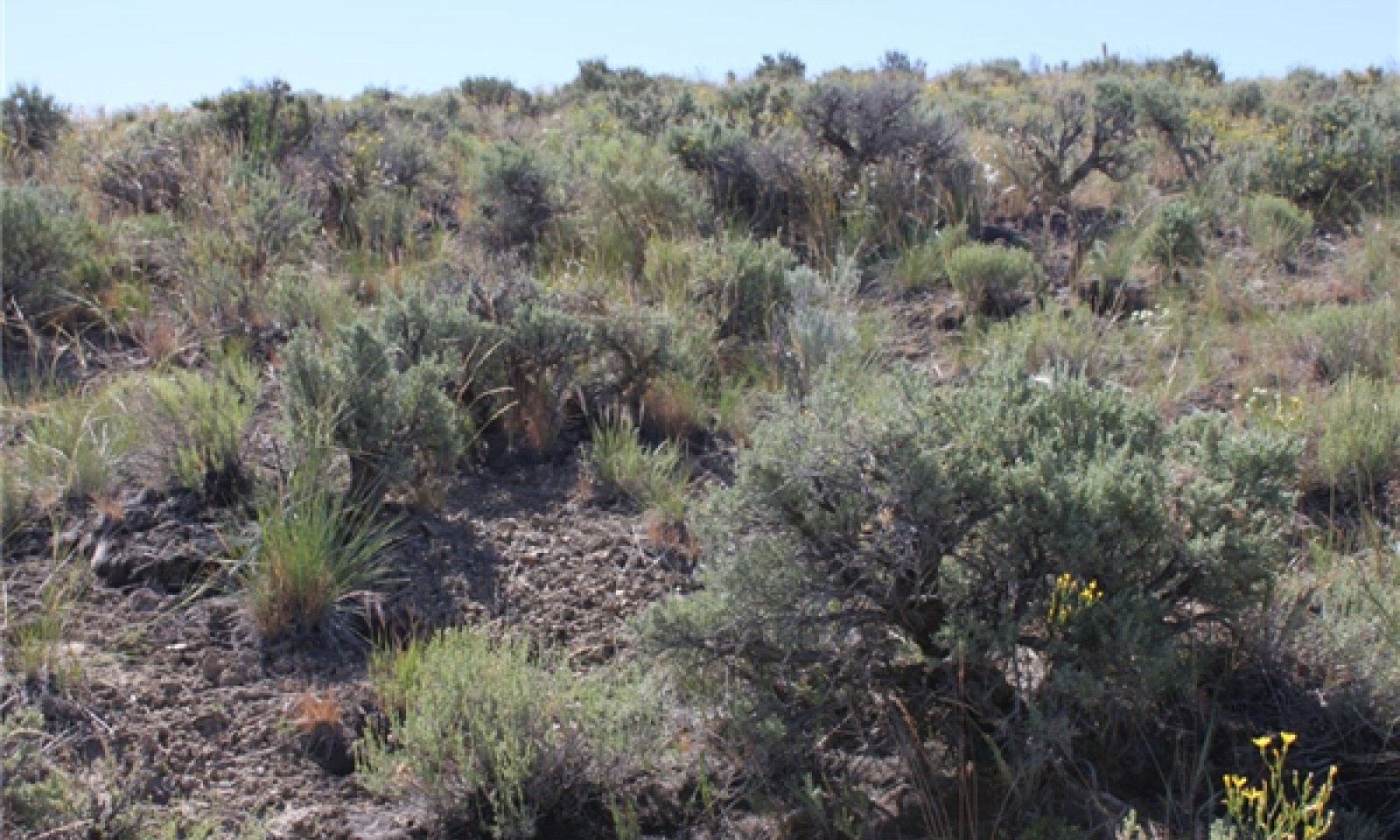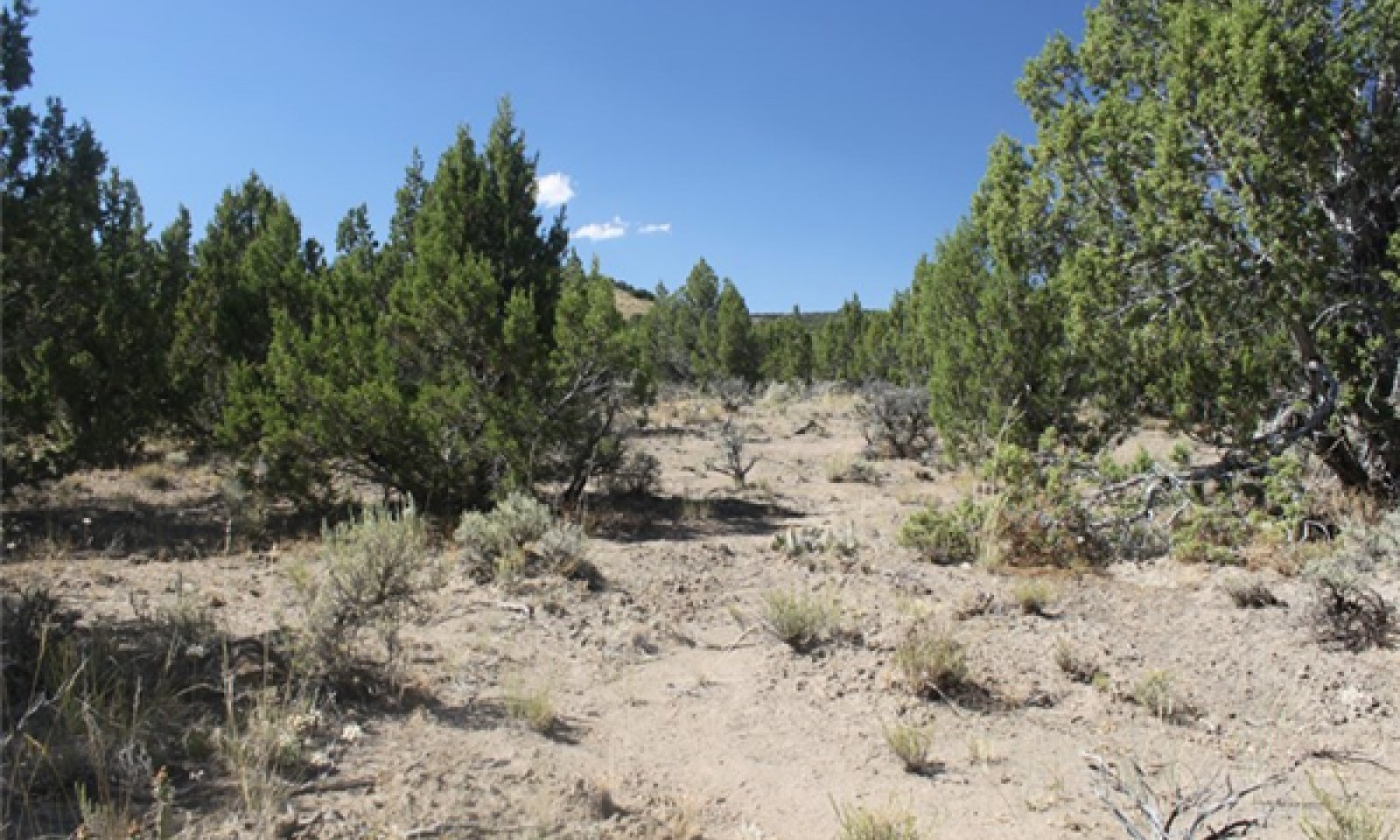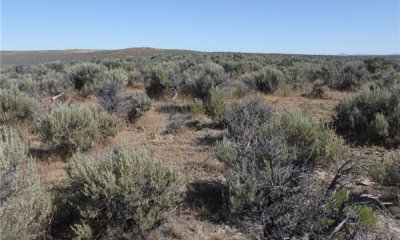
ASHY LOAM 8-10 P.Z.
Scenario model
Current ecosystem state
Select a state
Management practices/drivers
Select a transition or restoration pathway
- Transition T1A More details
- Transition T2A More details
- Transition T2B More details
- Transition T2C More details
- Restoration pathway R3A More details
- Transition T3A More details
- Transition T3B More details
- Restoration pathway R3B More details
- Restoration pathway R4A More details
- Transition T5A More details
- Restoration pathway R5A More details
- Transition T5B More details
- Transition AT6 More details
-
No transition or restoration pathway between the selected states has been described
Target ecosystem state
Select a state
Description
The Reference State 1.0 is a representative of the natural range of variability under pristine conditions. The reference state has three general community phases: a shrub-grass dominant phase, a perennial grass dominant phase and a shrub-dominant phase. State dynamics are maintained by interactions between climatic patterns and disturbance regimes. Negative feedbacks enhance ecosystem resilience and contribute to the stability of the state. These include the presence of all structural and functional groups, low fine fuel loads, and retention of organic matter and nutrients. Plant community phase changes are primarily driven by fire, periodic drought and/or insect or disease attack.
Submodel
State 2
Current Potential State





Description
This state is similar to the Reference State 1.0. This state has the same three general community phases. Ecological function has not changed, however the resiliency of the state has been reduced by the presence of invasive weeds. Non-natives may increase in abundance but will not become dominant within this State. These non-natives can be highly flammable and can promote fire where historically fire had been infrequent. Negative feedbacks enhance ecosystem resilience and contribute to the stability of the state. These feedbacks include the presence of all structural and functional groups, low fine fuel loads and retention of organic matter and nutrients. Positive feedbacks decrease ecosystem resilience and stability of the state. These include the non-natives’ high seed output, persistent seed bank, rapid growth rate, ability to cross pollinate and adaptations for seed dispersal.
Submodel
State 3
Shrub State




Description
This state has two community phases: a Wyoming big sagebrush-dominated phase and a rabbitbrush-dominated phase. This state is a product of many years of heavy grazing during time periods harmful to perennial bunchgrasses. Sandberg bluegrass will increase with a reduction in deep rooted perennial bunchgrass competition and become the dominate grass. Sagebrush dominates the overstory and rabbitbrush may be a significant component. Sagebrush canopy cover is high and may be decadent, reflecting stand maturity and lack of seedling establishment due to competition with mature plants. The shrub overstory and Sandberg bluegrass understory dominate site resources such that soil water, nutrient capture, nutrient cycling and soil organic matter are temporally and spatially redistributed.
Submodel
Description
This state has two community phases one dominated by annual non-native species and the other is a shrub dominated site. This community is characterized by the dominance of annual non-native species such as cheatgrass and tumble mustard (Sisymbrium altissimum) in the understory. Sagebrush and/or rabbitbrush may dominate the overstory.
Submodel
State 5
Tree State



Description
This state has two community phases that are characterized by the dominance of Utah juniper in the overstory. Big sagebrush and perennial bunchgrasses may still be present, but they are no longer controlling site resources. Soil moisture, soil nutrients and soil organic matter distribution and cycling have been spatially and temporally altered.
Submodel
Description
This state has three community phases: a grass-dominated phase, and grass-shrub dominated phase, and a shrub-dominated phase. This state is characterized by the dominance of seeded introduced wheatgrass species in the understory. Forage kochia and other desired seeded species including Wyoming big sagebrush and native and non-native forbs may be present. Soil nutrients and soil organic matter distribution and nutrient cycling are primarily driven by deep rooted bunchgrasses.
Submodel
Description
This state has one community phase that is dominated by Utah juniper. Abiotic factors including soil redistribution and erosion, soil temperature, soil crusting and sealing are primary drivers of ecological condition within this state. Soil moisture, soil nutrients and soil organic matter distribution and nutrient cycling are severely altered due to degraded soil surface conditions.
Utah juniper dominates the overstory and herbaceous species may be present in trace amounts particularly under tree canopies. Regeneration of trees or herbaceous species is not evident.
Submodel
Mechanism
Trigger: This transition is caused by the introduction of non-native annual plants, such as cheatgrass, mustards, halogeton (Halogeton glomeratus) and bur buttercup (Ceratocephala testiculata).
Slow variables: Over time the annual non-native plants will increase within the community decreasing organic matter inputs from deep-rooted perennial bunchgrasses resulting in reductions in soil water availability for perennial bunchgrasses.
Threshold: Any amount of introduced non-native species causes an immediate decrease in the resilience of the site. Annual non-native species cannot be easily removed from the system and have the potential to significantly alter disturbance regimes from their historic range of variation.
Mechanism
Trigger: To Community Phase 3.1: Inappropriate, long-term grazing will decrease or eliminate deep rooted perennial bunchgrasses, increase Sandberg bluegrass and favor shrub growth and establishment. To Community Phase 3.2: Severe fire will remove sagebrush overstory, decrease perennial bunchgrasses and enhance Sandberg bluegrass.
Slow variables: Long term decrease in deep-rooted perennial grass density resulting in a decrease in organic matter inputs and resulting in soil water decline.
Threshold: Loss of deep-rooted perennial bunchgrasses changes nutrient cycling, nutrient redistribution, and soil water storage.
Mechanism
Trigger: To Community Phase 4.1: Severe fire. To Community Phase 4.2: Inappropriate grazing management that favors shrubs in the presence of non-native species.
Slow variables: Increased production and cover of non-native annual species.
Threshold: Loss of deep-rooted perennial bunchgrasses and shrubs truncates, spatially and temporally, nutrient capture and cycling within the community. Increased, continuous fine fuels from annual non-native plants modify the fire regime by changing intensity, size and spatial variability of fires.
Mechanism
Trigger: Time and lack of disturbance or management action allows for Utah Juniper to dominate. This may be coupled with grazing management that favors tree establishment by reducing understory herbaceous competition for site resources
Slow variables: Over time the abundance and size of trees will increase resulting in reduced infiltration and increased runoff.
Threshold: Trees dominate ecological processes and number of shrub skeletons exceed number of live shrubs.
Mechanism
Brush management such as mowing, coupled with range seeding of deep-rooted native bunchgrasses. Restoration attempts causing soil disturbance will likely initiate a transition to an annual state.
Relevant conservation practices
| Practice | External resources |
|---|---|
|
Brush Management |
|
|
Range Planting |
Mechanism
Trigger: To Community Phase 4.1: Severe fire. To Community Phase 4.2: Inappropriate grazing management in the presence of annual non-native species.
Slow variables: Increased production and cover of non-native annual species.
Threshold: Increased, continuous fine fuels modify the fire regime by changing intensity, size and spatial variability of fires. Changes in plant community composition and spatial variability of vegetation due to the loss of perennial bunchgrasses and sagebrush truncate energy capture spatially and temporally thus impacting nutrient cycling and distribution.
Mechanism
Trigger: Time and a lack of disturbance or management action allows for Utah Juniper to dominate site. This may be coupled with grazing management that favors tree establishment by reducing understory herbaceous competition for site resources.
Slow variables: Over time the abundance and size of trees will increase reducing infiltration and increasing runoff.
Threshold: Trees dominate ecological processes and number of shrub skeletons exceed number of live shrubs.
Mechanism
Brush management such as mowing, coupled with seeding of deep rooted non-native wheatgrasses. Restoration attempts causing soil disturbance will likely initiate a transition to an annual state.
Relevant conservation practices
| Practice | External resources |
|---|---|
|
Brush Management |
|
|
Range Planting |
Mechanism
Seeding of deep-rooted bunchgrasses; may be coupled with brush management and/or herbicide. Probability of success is low to medium.
Relevant conservation practices
| Practice | External resources |
|---|---|
|
Brush Management |
|
|
Range Planting |
Mechanism
Trigger: Catastrophic fire causing a stand replacement event would transition Annual State 4.0. Inappropriate tree removal practices with soil disturbance would cause a transition to the Annual State 4.
Slow variables: Increased production and cover of non-native annual species under tree canopies.
Threshold: Closed tree canopy with non-native annual species dominant in the understory changes the intensity, size and spatial variability of fires. Changes in plant community composition and spatial variability of vegetation due to the loss of perennial bunchgrasses and sagebrush truncate energy capture and impact nutrient cycling and distribution.
Mechanism
Tree removal and seeding of desired species. Tree removal practices that minimize soil disturbance are recommended. Probability of success declines with increased presence of non-native annual species (Community Phase 5.2).
Mechanism
Trigger: Time and lack of disturbance allows for tree competition to eliminate herbaceous understory.
Slow variables: Bare ground interspaces large and connected; water flow paths long and continuous; understory sparse, resulting in reduced infiltration and increased runoff.
Threshold: Soil redistribution and erosion is significant and linked to vegetation mortality evidenced by pedestalling and burying of herbaceous species and / or lack of recruitment in the interspaces.
Model keys
Briefcase
Add ecological sites and Major Land Resource Areas to your briefcase by clicking on the briefcase (![]() ) icon wherever it occurs. Drag and drop items to reorder. Cookies are used to store briefcase items between browsing sessions. Because of this, the number of items that can be added to your briefcase is limited, and briefcase items added on one device and browser cannot be accessed from another device or browser. Users who do not wish to place cookies on their devices should not use the briefcase tool. Briefcase cookies serve no other purpose than described here and are deleted whenever browsing history is cleared.
) icon wherever it occurs. Drag and drop items to reorder. Cookies are used to store briefcase items between browsing sessions. Because of this, the number of items that can be added to your briefcase is limited, and briefcase items added on one device and browser cannot be accessed from another device or browser. Users who do not wish to place cookies on their devices should not use the briefcase tool. Briefcase cookies serve no other purpose than described here and are deleted whenever browsing history is cleared.
Ecological sites
Major Land Resource Areas
The Ecosystem Dynamics Interpretive Tool is an information system framework developed by the USDA-ARS Jornada Experimental Range, USDA Natural Resources Conservation Service, and New Mexico State University.


